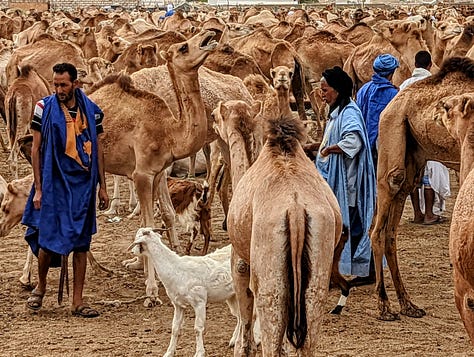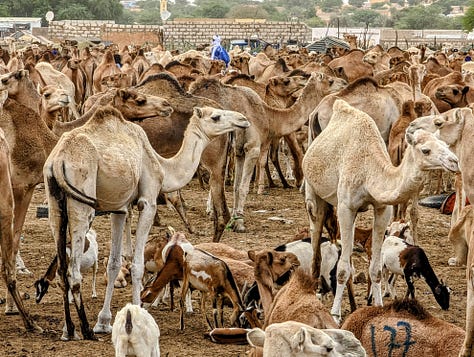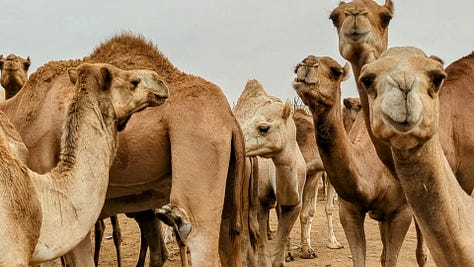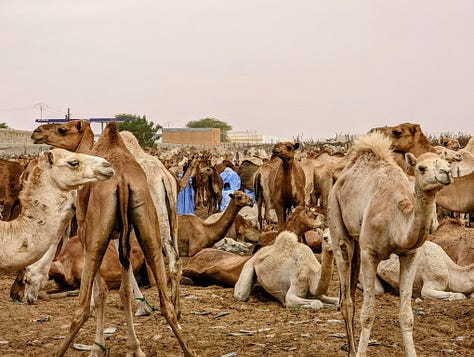Every Day is Hump Day at the World's Largest Camel Market
In Mauritania, a Saharan nation where camels outnumber people, the vast main camel market is less a livestock exchange and more a dusty ode to the improbable ways humans thrive in the desert.
📍 Nouakchott, Mauritania
In Nouakchott, Mauritania's capital, every day is hump day at the world's largest camel market. Camels, outnumbering the country's 4.6 million people by a comfortable margin (6-7 million strong), are ingrained in Mauritanian life. Across the vast expanse of the Sahara, which swallows ninety percent of the country, these desert stalwarts serve as transportation, sustenance, and even a form of marital currency.









In this Saharan nation, camels are the ultimate utility animal. With a mere one percent of the land paved, they function as the de facto automobile, traversing the unforgiving terrain. Their contributions extend far beyond transport, however, as camel milk supplements breastfeeding and their meat, fresh or tinned, remains the primary source of animal protein. Even camels past their prime contribute as desert cruisers, providing sustenance in a country often on the brink of scarcity.
Security, too, rests on the camel's hump. Mauritania's Mehari National Guard, a “camel corps” patrols the porous and problematic border with Mali. These 300 troops leverage the camel's legendary endurance and ability to traverse unforgiving terrain, carrying essential supplies and navigating the harsh landscape through secure remote villages. Their presence is a vital deterrent to extremists in this strife-prone region.
Even in matters of the heart, camels are woven into the fabric of Mauritanian tradition. In this Islamic society, dowries, known as mahr, are presented in the form of camels, a tangible symbol of the groom's commitment. The number of camels reflects the bride's social standing, historically linked to her weight. The outlawed but persistent practice of leblouh, the fattening of young women, is a vestige of a bygone era where a plump physique signified wealth, beauty, and fertility—traits prized in a society with high childhood mortality.
Camels are living testaments to Darwinian selection in this unforgiving environment. Their double coat acts as both insulator and radiator, shielding them from the sun's furnace while regulating their internal temperature. Thickened skin and lengthy eyelashes fend off the relentless sun and ever-present sand. Broad, calloused feet navigate the unforgiving terrain, while their humps store reserves of fat, a critical energy source during lacking times. Perhaps their most remarkable adaptation is their specialized digestive system, featuring a ruminant stomach that extracts and conserves water from their food, allowing them to survive extended periods without a single sip.
In the vast Saharan, the destinies of camel and Mauritanian are inextricably linked. Camels provide not just transportation and sustenance, but also a cornerstone of their cultural traditions. In turn, Mauritanians offer these remarkable creatures care, shelter, and a bond forged in shared survival. Nouakchott's market is a vibrant testament to this desert symbiosis. Acquiring a camel, a significant investment costing roughly half the average Mauritanian's annual salary ($1,200), is transformative. It's not just a livestock purchase; it's a long-term partnership, a source of income, a loyal companion, and for some, even a right to marry .



